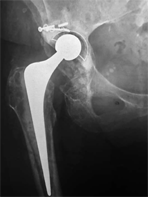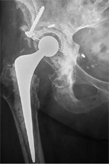A Review and Description of Acetabular Impaction Bone Grafting: Updating the Traditional Technique
- PMID: 34938686
- PMCID: PMC8654592
- DOI: 10.5371/hp.2021.33.4.173
A Review and Description of Acetabular Impaction Bone Grafting: Updating the Traditional Technique
Abstract
Restoring acetabular bone loss in revision hip arthroplasty is a major challenge for the orthopaedic surgeon. This paper discusses the traditional cemented technique of impaction bone grafting as applied to the acetabulum, as well as the evolution of the technique to employ uncemented implants. Some of the recent published literature regarding these techniques is reviewed and the personal experiences of the senior author with these techniques are also reported.
Keywords: Acetabulum; Bone cement; Bone grafting; Reoperation; Total hip arthroplasty.
Copyright © 2021 by Korean Hip Society.
Conflict of interest statement
CONFLICT OF INTEREST: The authors declare that there is no potential conflict of interest relevant to this article.
Figures










References
-
- Gross AE, Garbuz D, Morsi ES. In: Orthopaedic allograft surgery. Czitrom AA, Winkler H, editors. Vienna: Springer; 1996. Revision arthroplasty of the acetabulum with restoration of bone stock; pp. 101–111.
-
- Slooff TJ, Huiskes R, van Horn J, Lemmens AJ. Bone grafting in total hip replacement for acetabular protrusion. Acta Orthop Scand. 1984;55:593–596. - PubMed
-
- Oakes DA, Cabanela ME. Impaction bone grafting for revision hip arthroplasty: biology and clinical applications. J Am Acad Orthop Surg. 2006;14:620–628. - PubMed
Publication types
LinkOut - more resources
Full Text Sources

